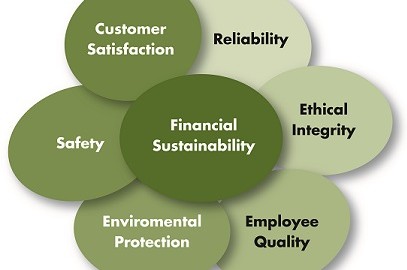Core values have the power to drastically improve your company’s culture. They also have the power to foster cynicism. It all depends on how you treat them.
First off, let’s remember what core values are. They should be honest and authentic statements of what’s essential to the organization’s success. If superb customer service is essential, then it’s a core value. If behaving ethically at all times is essential, it’s a core value. If making a profit is essential, then that’s a core value.

The core values should not feel trivial or incomplete. Respect, teamwork and collaboration may be part of your organization’s core values; but they are insufficient on their own. The core values should provide a complete picture of the day-to-day behaviors essential to success.
The core values should be tied to specific behaviors. For example, customer service can be tied to how quickly employees respond to complaints or requests for information. Ethical behavior can be tied to how readily employees accept responsibility for mistakes and whether they respond honestly when placed in compromising situations.
Core values should not be simple slogans or feel-good statements. “We stand for quality” is just a vague slogan. “We place our customers above ourselves” is just a feel-good statement. Core values should span all the things that are essential to success – and state the specific behaviors tied to that value. Otherwise, the core values will tend to inspire cynicism.
Your organization can have the world’s best core values, but if employees are not clear about those values, they’re practically useless.
Employ the following strategies for putting core values at the top of employees’ minds:
- Encourage employees to have conversations about the core values. Ask them which of the organization’s values they think is most important. Ask them to identify an instance in which the organization wasn’t true to its values, and what the outcome was. Ask them to discuss situations in which core values might come into conflict – and how they would handle it. For example, if a large customer asks a sales rep to falsify an invoice in order to reduce the tax impact, how would the employee respond?
- Integrate the core values into materials that are already in use. Add them to your company’s webpage, recruiting documents, annual review materials, and even thank-you notes.
- Post the values in gathering spaces. Hang them up in meeting rooms, company break rooms, the entryway and other prominent areas.
- Link the core values to performance objectives. For example, if customer service is a core value, set a target of achieving 95% customer satisfaction on an annual customer survey. Share the actual performance information with employees.
- Survey employees about how well they think the company is doing in upholding the core values and related behaviors. Ask them to reflect on the company as a whole and their immediate team. Once the results are in, engage them in discussions about how to improve.
Chapter 1 of my new book, The Leadership Equation, dives deeply into the subject of core values. It describes how to identify your organization’s core values – and how to ensure that employees’ day-to-day decisions and activities are aligned with the company’s core values.
(321)







